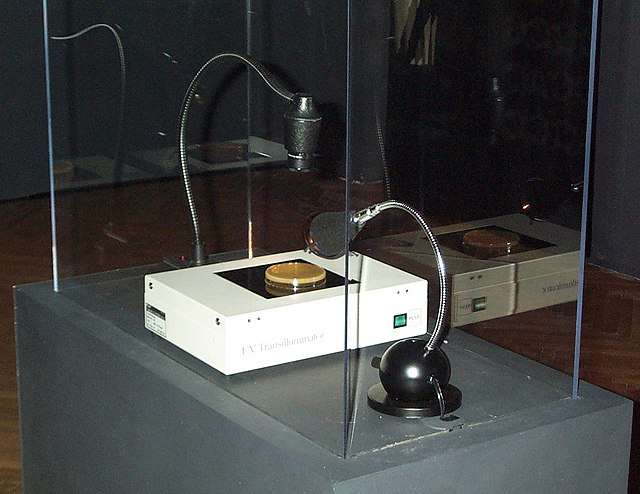New media art includes artworks designed and produced by means of electronic media technologies. It comprises virtual art, computer graphics, computer animation, digital art, interactive art, sound art, Internet art, video games, robotics, 3D printing, immersive installation and cyborg art. The term defines itself by the thereby created artwork, which differentiates itself from that deriving from conventional visual arts such as architecture, painting or sculpture.
Eduardo Kac's installation "Genesis" Ars Electronica 1999
10.000 moving cities, Marc Lee, 2013, National Museum of Modern and Contemporary Art Seoul, Korea
Maurizio Bolognini, Sealed Computers (Nice, France, 1992–1998). This installation uses computer codes to create endless flows of random images that nobody would see. (Images are continuously generated but they are prevented from becoming a physical artwork).
World Skin (1997), Maurice Benayoun's Virtual Reality Interactive Installation (Photo Safari in the Land of War)
Virtual art is a term for the virtualization of art, made with the technical media developed at the end of the 1980s. These include human-machine interfaces such as visualization casks, stereoscopic spectacles and screens, digital painting and sculpture, generators of three-dimensional sound, data gloves, data clothes, position sensors, tactile and power feed-back systems, etc. As virtual art covers such a wide array of mediums it is a catch-all term for specific focuses within it. Much contemporary art has become, in Frank Popper's terms, virtualized.
10.000 Moving Cities, Virtual Art, Marc Lee





